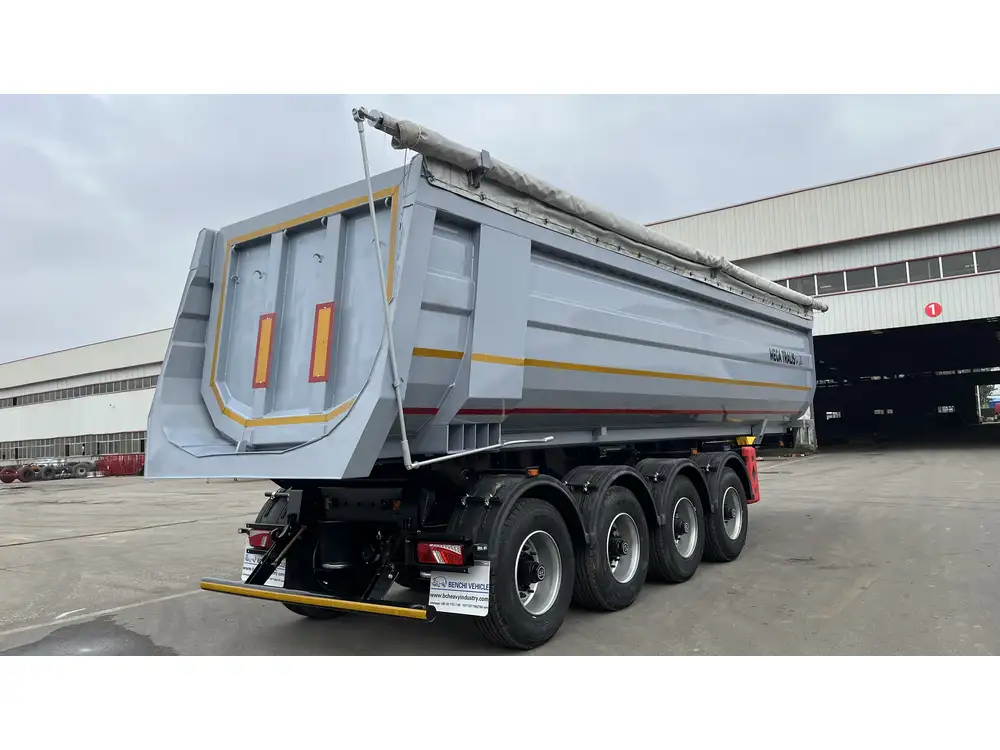Semi-trailers are fundamental vessels in the transportation sector, serving as critical links in the logistics chain. This article provides an in-depth analysis of the dimensions associated with full-sized semi-trailers, including specifications, regulations, and variations based on usage. We aim to elucidate the complexities and considerations inherent in choosing the right semi-trailer for your business needs.
What Defines a Full-Sized Semi-Trailer?
At its core, a semi-trailer is a non-motorized vehicle designed to be towed by a tractor or truck. While various sizes and dimensions of semi-trailers are available, a full-sized semi-trailer typically conforms to specific length standards that are recognized across state and national regulations.
Standard Lengths
The length of a full-sized semi-trailer generally ranges between 48 to 53 feet, with the following breakdown:
| Type of Semi-Trailer | Standard Length |
|---|---|
| Standard Semi-Trailer | 48 feet |
| Extended Semi-Trailer | 53 feet |
These dimensions cater to a variety of cargo types, from general freight to specialized loads requiring unique handling.

Legal Considerations in Trailer Length
It’s imperative to recognize that the length regulations for semi-trailers can vary significantly from one jurisdiction to another. The United States Department of Transportation (USDOT) enforces federal standards, while individual states may impose additional restrictions. For instance:
- Interstate Highways: The federal maximum length allowed for a semi-trailer is 53 feet.
- Non-Interstate Roads: Certain states may allow trailers longer than 53 feet within state lines, but this generally applies only to specific cargo types or routes.
For those seeking to operate within regulatory confines, it is advisable to familiarize oneself with both federal and state regulations before purchasing or utilizing a semi-trailer.
Types of Semi-Trailers and Their Length Variations
While semi-trailers typically fall into the aforementioned standard lengths, various types of semi-trailers exist, each designed for specific applications and cargo.
Common Types of Semi-Trailers
Flatbed Semi-Trailer
- Length: Commonly available in 48 feet or 53 feet.
- Use: Ideal for transporting large, heavy items or machinery.
Reefer Trailer (Refrigerated)
- Length: Typically 53 feet.
- Use: Designed for perishable goods requiring temperature control.
Dry Van Trailer
- Length: Usually 53 feet.
- Use: Most common type, used for general cargo protection against elements.
Tank Trailer
- Length: Often 48 to 53 feet.
- Use: Used for transporting liquids, including chemicals and fuel.
Lowboy Semi-Trailer
- Length: Typically 48 feet but can vary.
- Use: Designed for transporting heavy and oversized loads.
Each type serves a distinct purpose, necessitating a consideration of length, height, and overall design when evaluating operational needs.

Capacity and Weight Considerations
Length is not the only critical dimension when assessing semi-trailers. We must also analyze the capacity and weight they can handle.
Standard Dimensions and Specifications
| Type of Semi-Trailer | Max Weight | Internal Width | Height |
|---|---|---|---|
| Flatbed | Up to 48,000 lbs | 8.5 feet | 5.5 feet |
| Reefer | Up to 44,000 lbs | 8 feet | 9-10 feet |
| Dry Van | Up to 45,000 lbs | 8 feet | 8-9 feet |
| Tank | Up to 35,000 lbs | 8 feet | 10-13 feet |
| Lowboy | Up to 40,000 lbs | 8.5 feet | 18 inches |
The capacity and weight allowances can often dictate the type of semi-trailer selected, depending on the cargo requirements.
Importance of Understanding Weight Distribution
The positioning of cargo within a trailer holds significant importance for safe operation. Improper weight distribution can lead to handling difficulties, decrease braking efficiency, and may even render a vehicle non-compliant with legal weight limits.
Weight Distribution Tips:
- Load heavier items closer to the trailer’s axles to maintain balance.
- Use proper equipment, such as load binders, to secure cargo effectively.
- Regularly inspect cargo load and adjust as necessary during long hauls.

Assessing User Needs: Choosing the Right Semi-Trailer Length
When selecting a semi-trailer, understanding specific needs plays a pivotal role in determining the right length and type. Here’s a structured approach to discerning what might work best for your operation:
Determine Cargo Type and Volume
Identify Cargo Characteristics
- Type (dry, insulated, liquid, oversized)
- Size and weight constraints
Assess Volume Requirements
- Determine cubic footage needed for transport.
- Evaluate loading and unloading complexity based on cargo type.
Evaluate Route and Regulatory Constraints
- Assess the frequency of state line crossings—this may impact legal length allowances.
- Consider specific weather patterns or seasonal conditions that might dictate the need for specialized trailers, such as reefers or tarped options.

Analyze Financial Considerations
- Purchase vs. Lease: Determine the best financial model based on usage frequency.
- Resale Value: Some trailer types depreciate in value faster than others.
Plan for Future Needs
- Consider potential business expansion that could warrant a shift in cargo volume or type.
- Ensure that the semi-trailer selected allows for flexibility in use.
Conclusion: Making an Informed Decision
In conclusion, understanding the length of a full-sized semi-trailer is pivotal for those operating in logistics, freight transportation, and similar sectors. By considering the range of available types, legalities, operational needs, and future growth potential, businesses can make informed decisions that optimize efficiency, compliance, and profitability.
We encourage potential buyers to conduct comprehensive research, engage with trusted manufacturers, and consult industry experts to ensure their investments align with both current and future logistical demands.
By delving deeply into the specifications, regulations, and considerations outlined in this document, we aim to enhance the reader’s understanding of semi-trailer lengths, ultimately facilitating informed and confident purchasing decisions in the realm of freight and transportation logistics.



